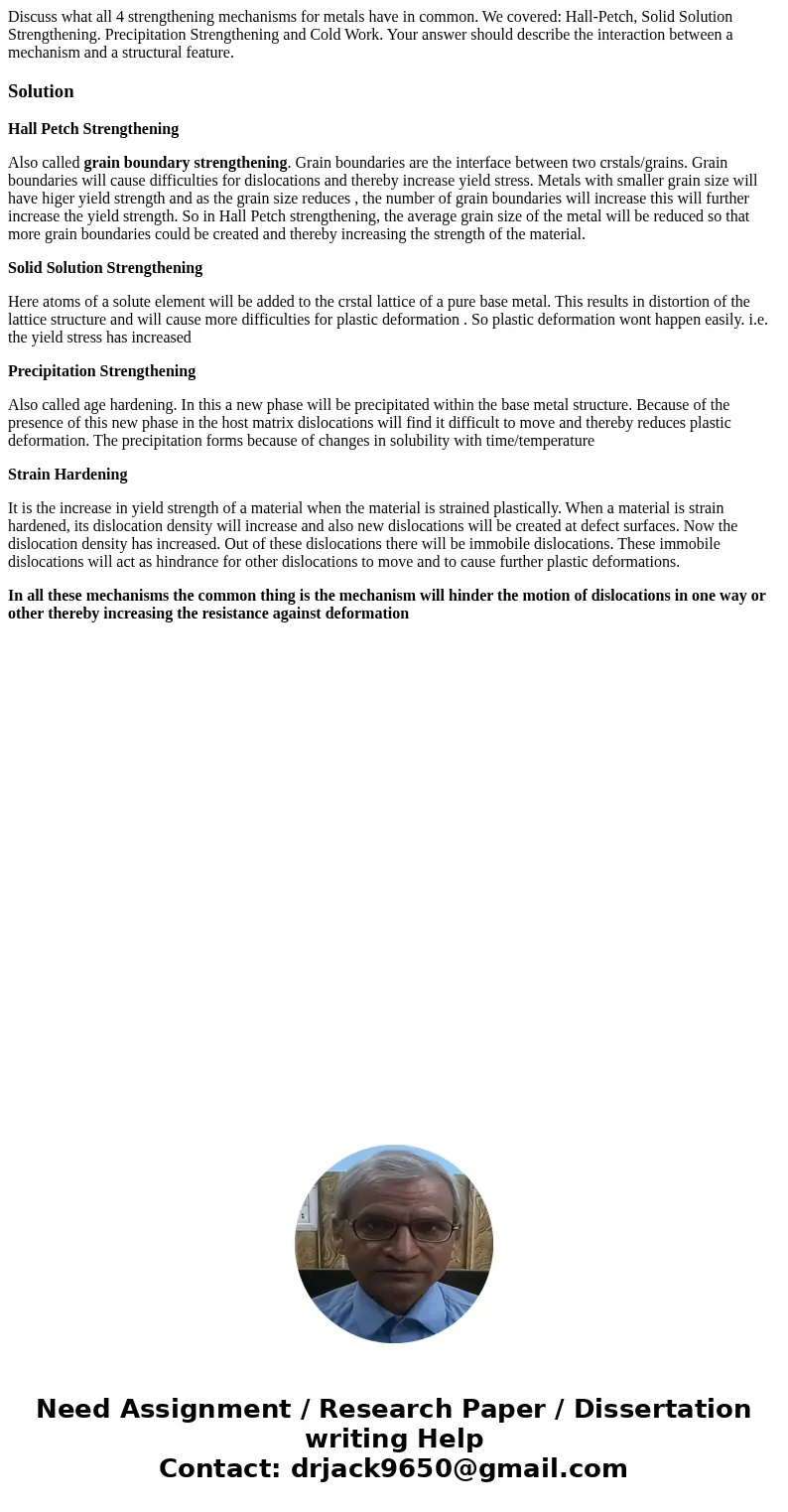Discuss what all 4 strengthening mechanisms for metals have
Solution
Hall Petch Strengthening
Also called grain boundary strengthening. Grain boundaries are the interface between two crstals/grains. Grain boundaries will cause difficulties for dislocations and thereby increase yield stress. Metals with smaller grain size will have higer yield strength and as the grain size reduces , the number of grain boundaries will increase this will further increase the yield strength. So in Hall Petch strengthening, the average grain size of the metal will be reduced so that more grain boundaries could be created and thereby increasing the strength of the material.
Solid Solution Strengthening
Here atoms of a solute element will be added to the crstal lattice of a pure base metal. This results in distortion of the lattice structure and will cause more difficulties for plastic deformation . So plastic deformation wont happen easily. i.e. the yield stress has increased
Precipitation Strengthening
Also called age hardening. In this a new phase will be precipitated within the base metal structure. Because of the presence of this new phase in the host matrix dislocations will find it difficult to move and thereby reduces plastic deformation. The precipitation forms because of changes in solubility with time/temperature
Strain Hardening
It is the increase in yield strength of a material when the material is strained plastically. When a material is strain hardened, its dislocation density will increase and also new dislocations will be created at defect surfaces. Now the dislocation density has increased. Out of these dislocations there will be immobile dislocations. These immobile dislocations will act as hindrance for other dislocations to move and to cause further plastic deformations.
In all these mechanisms the common thing is the mechanism will hinder the motion of dislocations in one way or other thereby increasing the resistance against deformation

 Homework Sourse
Homework Sourse